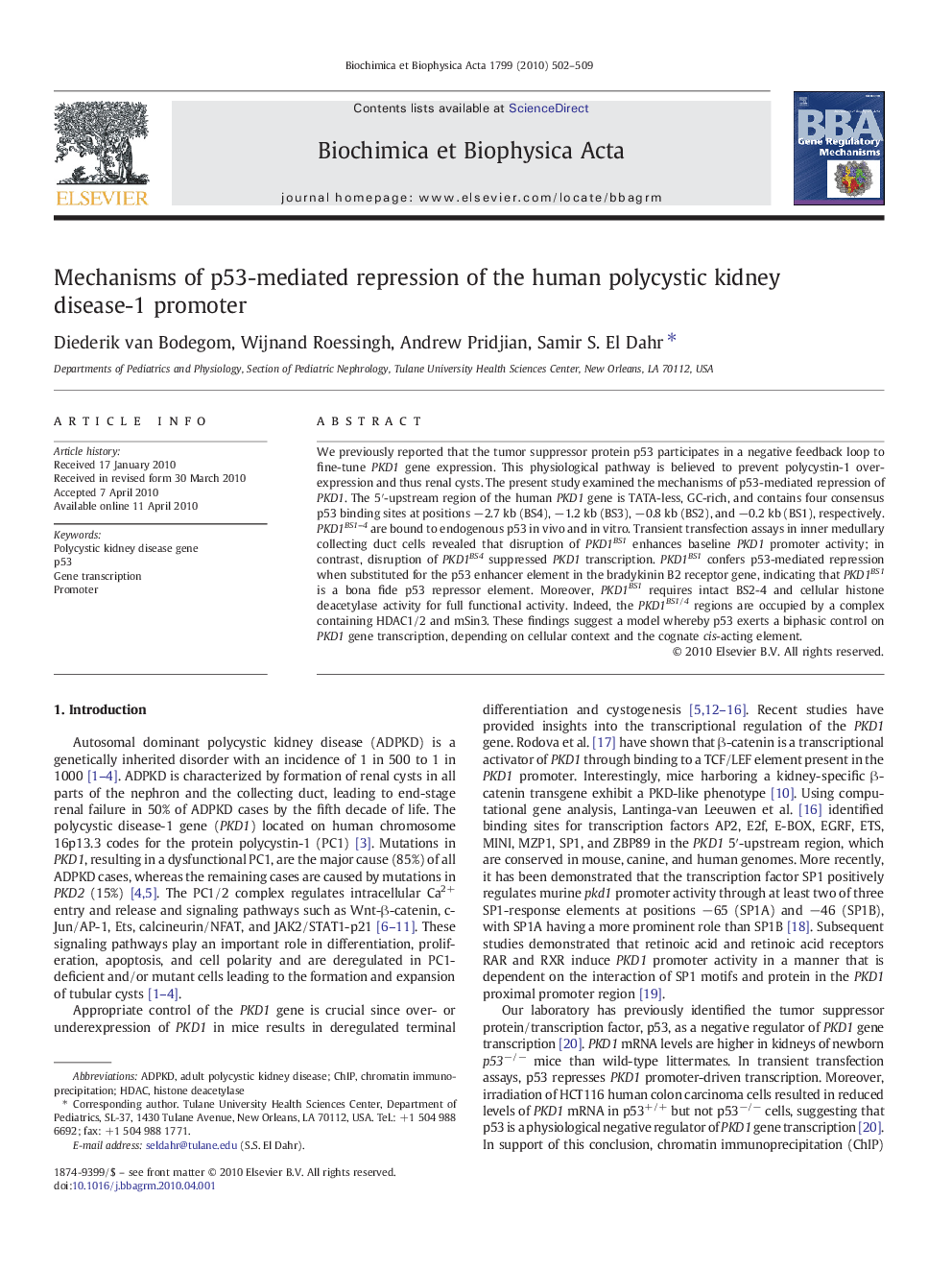| Article ID | Journal | Published Year | Pages | File Type |
|---|---|---|---|---|
| 1946796 | Biochimica et Biophysica Acta (BBA) - Gene Regulatory Mechanisms | 2010 | 8 Pages |
We previously reported that the tumor suppressor protein p53 participates in a negative feedback loop to fine-tune PKD1 gene expression. This physiological pathway is believed to prevent polycystin-1 overexpression and thus renal cysts. The present study examined the mechanisms of p53-mediated repression of PKD1. The 5′-upstream region of the human PKD1 gene is TATA-less, GC-rich, and contains four consensus p53 binding sites at positions −2.7 kb (BS4), −1.2 kb (BS3), −0.8 kb (BS2), and −0.2 kb (BS1), respectively. PKD1BS1–4 are bound to endogenous p53 in vivo and in vitro. Transient transfection assays in inner medullary collecting duct cells revealed that disruption of PKD1BS1 enhances baseline PKD1 promoter activity; in contrast, disruption of PKD1BS4 suppressed PKD1 transcription. PKD1BS1 confers p53-mediated repression when substituted for the p53 enhancer element in the bradykinin B2 receptor gene, indicating that PKD1BS1 is a bona fide p53 repressor element. Moreover, PKD1BS1 requires intact BS2-4 and cellular histone deacetylase activity for full functional activity. Indeed, the PKD1BS1/4 regions are occupied by a complex containing HDAC1/2 and mSin3. These findings suggest a model whereby p53 exerts a biphasic control on PKD1 gene transcription, depending on cellular context and the cognate cis-acting element.
